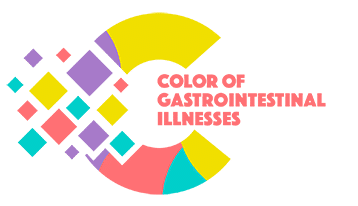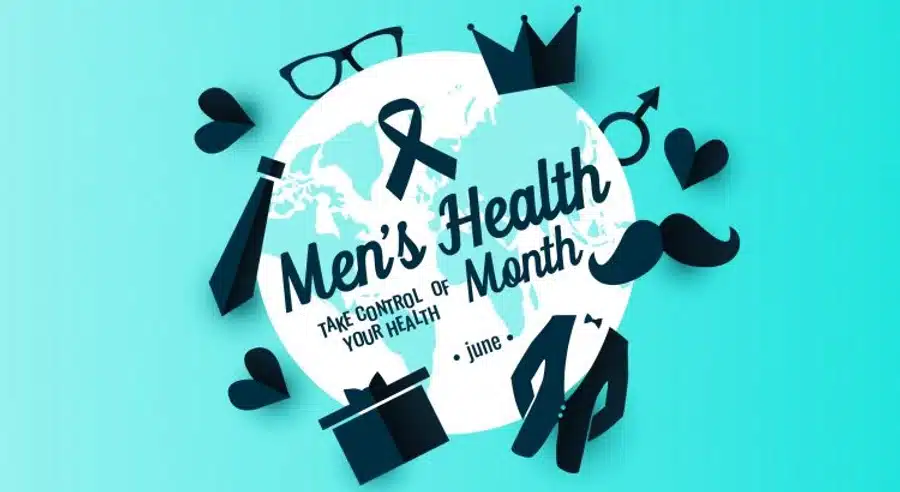Men are notorious for avoiding doctors, overlooking health issues, and not seeking necessary medical care. A 2019 survey by Cleveland Clinic discovered that only 50% of U.S. males age 18 and older see a doctor for annual check-ups. When they did see a healthcare provider, 20% admitted lying to or not being completely honest about their condition.
How much do men hate going to the doctor? Survey results showed that 72% of men would rather do household chores, and 77% would rather go shopping with a significant other.
Unfortunately, society has taught men that caring for one’s health and well-being is a sign of weakness. By focusing on awareness and education of men’s health issues, Men’s Health Month and National Men’s Health Week hope to destigmatize this view. The Men’s Health Network has celebrated men’s health and wellness every June since 1992. In 1994, President Bill Clinton signed S.J.R. 179 into law, formally recognizing National Men’s Health Week during the middle of the month.
Encouraging and empowering men to take control of their health can help reverse trends like having a life expectancy five years shorter than females and dying at higher rates from heart disease, cancer, and accidental injuries. For men of color, the statistics can be even more alarming, especially with conditions like heart disease, stroke, COVID-19, and prostate cancer.
Heart Disease and Stroke
Heart disease is the leading cause of death for American males, but the risks for ethnic and racial groups vary. In general, white males have the highest risk for heart disease. Only Native Americans and Pacific Islanders, at 50% and 10% respectively, are more likely to be diagnosed with coronary issues; however, they’re less likely to die from them. On the other hand, black men are at lower risk for heart disease, but their chances of dying from it are 30% greater than white men.
The risk of stroke is mostly the same across ethnicities, except for Pacific Islanders, who are four times more likely to have one. Not surprisingly, the likelihood of dying from stroke is 30% higher for Pacific Islanders. However, even with the lower risk of suffering a stroke, the death rate for black men is the greatest at 70%. All other groups have similar to lower risks as white males.
The discrepancies among the races can be attributed to conditions that can increase the risk for heart disease, like hypertension (high blood pressure), obesity (a body mass index of 30 or more), and diabetes. Blacks and Native Americans have the highest degree of hypertension. Native Americans and Pacific Islanders have a greater propensity to be obese. All men of color were more at risk of being diabetic than their white peers.
Controlling high blood pressure, obesity, and diabetes can help lessen the risk for heart disease and stroke. Lifestyle changes like eating healthy and exercising regularly are the first step, followed by regular checkups.
COVID-19
The COVID-19 pandemic highlighted the extreme racial and ethnic health disparities that exist in the United States. In addition to the comorbidities discussed above, minorities at higher risk of becoming infected with and dying from the coronavirus because they’re disproportionately affected by social factors.
Many minorities live in neighborhoods with higher rates of infection that are also food and healthcare deserts with inadequate access to public transportation. Living in crowded housing conditions is common out of sheer necessity or because of the multigenerational households common in many ethnic cultures.
Minorities also make up a majority of the essential workforce, increasing their exposure to infection. Lower wages and lack of health insurance associated with these occupations make seeking proper medical care difficult, if not impossible.
Lack of education, illiteracy, and language barriers may also hinder access to the latest or accurate news about COVID-19 and the vaccine. This could lead to disinformation and distrust.
Although white people lead in the number of cases, minority groups generally have the most cases relative to their population numbers. According to the Centers for Disease Control and Prevention (CDC), as of May 25, 2021, Hispanics made up 28.8% of COVID-19 cases and 18.8% of deaths despite making up only 18.7% of the U.S. population. Case levels for Blacks were 11.3%, slightly lower than their 12.5% population number; however, death rates were higher at 13.7%.
Native Americans and Pacific Islanders had the least cases and deaths out of all ethnic and racial groups, with both numbers on par with their population. Only Asians, who made up 3.2% of cases and 4% of deaths, had lower numbers in terms of their population of 5.8%.
Racial disparities continue to be evident as the COVID-19 vaccine becomes more readily available. The CDC reports that while almost two-thirds of those fully vaccinated are white, only 12.4% are Hispanic, 8.6% are Black, 5.9 % are Asian, and 1.3% are Native American or Pacific Islander.
The lower numbers of vaccinated minorities may be attributed to the social factors mentioned above, but vaccine hesitancy also plays a role in many Black, Hispanic, and underserved communities. Misinformation about the vaccine, distrust in the government, and immigration status are common reasons for not getting vaccinated.
Regardless of race, males currently have a lower infection rate. However, they outnumber females in the number of COVID-19 deaths. Males are also falling behind in being fully vaccinated.
Prostate Cancer
Finally, we can’t talk about men’s health without discussing prostate cancer. The American Cancer Society lists prostate cancer as the second most common type of cancer and the second leading cause of cancer deaths in American men.
At a rate 1.8 times higher than other ethnicities, 1 in 6 black men will develop prostate cancer, and they’re 2.2 times more likely to die from it. Conversely, Hispanics are 10% less likely and Asians and Pacific Islanders are 50% less likely to receive a prostate cancer diagnosis compared to white men.
Because of the increased risk, the American Cancer Society recommends African-Americans, as well as men with a father or brother who had prostate cancer before age 65, should begin testing at age 45. Higher-risk patients—those with multiple immediate family members with prostate cancer— should begin screening at age 40. Men with an average risk should get tested at age 50.
A prostate cancer screening involves a physical exam and a blood test that measures the presence of prostate-specific antigen (PSA). If the physician finds any abnormalities, she may order additional tests, refer the patient to a urologist, or perform a biopsy to diagnose cancer.
Otherwise, most men with a PSA of 4 ng/ML or less won’t require further testing. If a man’s PSA level is 2.5 ng/mL or less, he should be screened every two years. Someone with higher levels should test annually.
With a cancer diagnosis, the man’s risk level determines treatment. An older man who is low-risk or has a low PSA and slow-growing cancer may put off treatment, and his physician can monitor for symptoms or complications. A popular treatment for localized cancer is surgically removing the prostate gland and surrounding tissue. Another option for low-risk patients is cryosurgery, where the doctor freezes the cancer cells. If surgery doesn’t eliminate all malignant cells or if cancer recurs, treatment may involve radiation therapy.
More aggressive treatment may be necessary if the patient is high-risk, cancer spreads or returns, or previous treatments are unsuccessful. Hormone therapy reduces androgen levels to prevent prostate cell growth. With chemotherapy, medication kills cancer cells. Immunotherapy uses medications to stimulate the patient’s immune system to attack the cancerous cells.
Early detection combined with more sophisticated treatment options has improved survival rates. Almost 100% of prostate cancer patients have a five-year survival rate after diagnosis. After 10 years, the survival rate decreases slightly to 98%. Even after 15 years, the survival rate remains high at 95%.
National Men’s Health Week 2021
National Men’s Health Week is June 14–20. On Friday, June 18, you can show your support on Wear BLUE® day. Encourage your fathers, uncles, husbands, sons, brothers, and all the other men in your life to be proactive in their health by going to the doctor regularly, eating healthy, exercising, and reducing stress.

